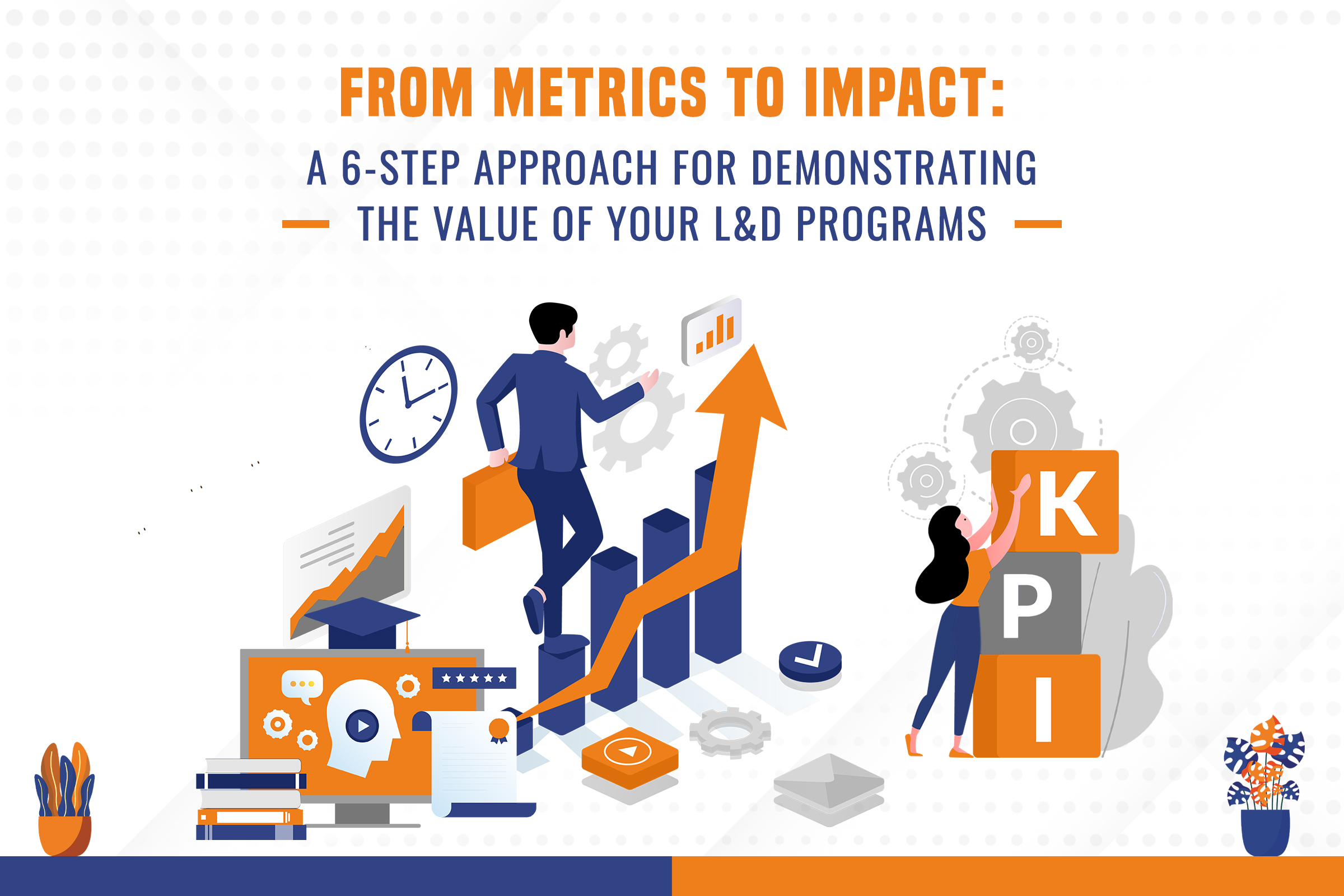
From Metrics to Impact: A 6-Step Approach for Demonstrating the Value of Your L&D Programs
In today's rapidly changing business landscape, Learning and Development (L&D) programs are more critical than ever. However, demonstrating the tangible value of these programs remains a challenge for many organizations. Simply tracking metrics is not enough; you must show how L&D initiatives impact the bottom line. In this article, we'll outline a 6-step approach to help you bridge the gap from metrics to impact and prove the value of your L&D programs.
6-Steps For Demonstrating The Value Of Your L&D Programs
Step 1: Define Clear Objectives
The first step in demonstrating the value of your L&D programs is to define clear and specific objectives. What are you trying to achieve with your training initiatives? Are you aiming to improve employee performance, enhance leadership skills, or reduce turnover? Defining these objectives not only provides direction for your programs but also serves as a foundation for measuring their impact.
For example, if your objective is to improve employee performance, your metrics may include tracking productivity levels, error rates, or customer satisfaction scores before and after the Leadership Training and Development.
Step 2: Choose Relevant Metrics
Once you have clear objectives, it's time to select the right metrics to measure progress toward those goals. Don't fall into the trap of measuring everything; focus on key performance indicators (KPIs) that directly align with your objectives. Relevant metrics might include completion rates, skill proficiency assessments, or post-training surveys to gauge learner satisfaction and knowledge retention.
For instance, if your L&D program aims to enhance leadership skills, you could track metrics such as the percentage of employees who receive promotions after completing the program or leadership survey scores.
Step 3: Collect Data Effectively
To measure the impact of your L&D programs, you need accurate and reliable data. Implement robust data collection methods, such as Corporate Learning Management Systems (LMS) for tracking online training or observational assessments for hands-on programs. Ensure that data collection is consistent and ongoing, allowing you to monitor progress over time.
Step 4: Analyze and Interpret Data
Analyzing data is where you can start to uncover insights into the effectiveness of your L&D programs. Compare baseline metrics to post-training data to identify any improvements or areas that require further attention. This step is crucial for understanding the impact of your initiatives and making data-driven decisions.
Consider using data visualization tools to create graphs and charts that make it easier to communicate your findings to stakeholders. These visuals can highlight trends, correlations, and areas where the L&D program has made a significant difference.
Step 5: Connect L&D Outcomes to Business Impact
To demonstrate the true value of your L&D programs, you must connect the outcomes of these programs to the broader business impact. This step is often where organizations struggle the most. To make this connection, consider the following:
Align with Business Goals:
Ensure that your L&D objectives align with the overall strategic goals of the organization. For example, if the company aims to increase market share, demonstrate how your sales training program contributes to achieving this goal.
Calculate ROI:
Quantify the return on investment (ROI) of your L&D programs. Compare the cost of implementing the program to the financial benefits it brings, such as increased revenue or reduced turnover costs. This calculation provides a clear picture of the program's financial impact.
Share Success Stories:
Collect and share success stories from employees who have benefited from the L&D and Leadership Training and Development initiatives. These stories can provide powerful qualitative evidence of the program's impact on individual performance and career progression.
Step 6: Communicate Effectively
Effective communication is essential for demonstrating the value of your L&D programs to key stakeholders, including executives, managers, and employees. Craft a compelling narrative that highlights the objectives, metrics, data analysis, and business impact. Use both quantitative and qualitative data to tell a comprehensive story.
Consider the following communication strategies:
Executive Summaries:
Create concise executive summaries that highlight the most critical findings and their relevance to the organization's strategic goals.
Presentations:
Deliver presentations that showcase the data in an engaging and easily understandable manner. Use visuals, infographics, gamified Corporate Learning Management Systems, and anecdotes to illustrate the program's impact.
Regular Updates:
Provide regular updates to stakeholders, demonstrating the ongoing value of L&D programs. This helps maintain support and engagement.
Final Words
Measuring the value of your Learning and Development programs goes beyond tracking metrics; it involves demonstrating how these initiatives positively impact the organization's bottom line. By following this 6-step approach, you can effectively bridge the gap from metrics to impact and showcase the tangible value of your L&D programs. Remember that consistent data collection, analysis, and clear communication are key to building a compelling case for continued investment in employee development. In doing so, you'll not only enhance your organization's performance but also elevate the importance of L&D within your company's culture.
